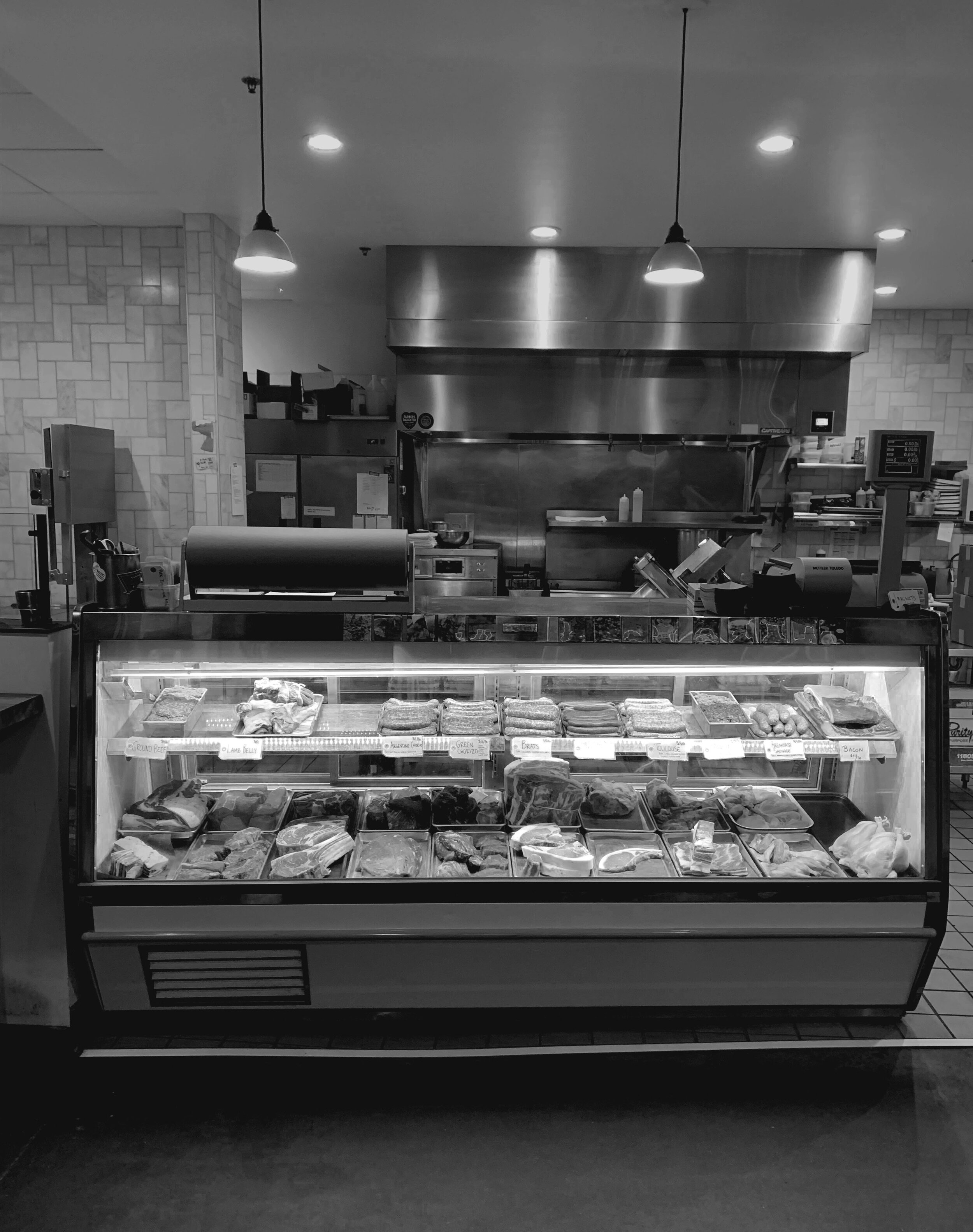A SHORT CONVERSATION WITH A BUTCHER
Whenever I’m in Minneapolis I try to visit Lowry Hill Meats. It’s a terrific butcher that also happens to serve great food—the breakfast sandwich, only available on weekends, has a cult following. A good butcher is such a great resource, like a wine merchant, who can offer advice, expertise and moral support. Erik Sather, who opened the butcher nearly four years ago, after a working as the executive chef at a leading local restaurant, is the perfect man to help you become more knowledgeable about every step of the process, from sourcing to grilling.
Erik and I spoke last year at this time. It’s taken me far too long to post this, but I thought it was a good time as many people are home and cooking. Summer is grilling season and who doesn’t like cooking over fire?
ON GIVING ADVICE
“Going to a co-op or a supermarket is overwhelming for most people because you’re staring at a whole wall of meat. But I think they’d have a much better experience if they could ask a couple of questions. There’s a few questions I ask. Specifically, how do you plan on cooking it? Do you plan on roasting or braising? And then I ask them if they prefer leaner cuts or the fattier cuts? Next, I’ll ask them bone-in or boneless? One of the most important questions is, how many people are you feeding? I think feeding 4-6 people is kind of a sweet spot because you can get a few different cuts and share. Bigger cuts are nice because you can get that good sear, but still, have that really nice temperature of rare to medium-rare. I always recommend something like a culotte. A culotte is a top sirloin down. In Argentina or Brazil, they’ll call it a Picanha. If you see a normal top sirloin steak in a supermarket it just looks like one big flat cut of meat. It’s a very tender muscle, which I think is great.”
OPENING LOWRY HILL MEATS
“We’re in our fourth year. In November of 2015, two weeks before Thanksgiving we opened up. I was the meat manager at a local co-op. And prior to that, I was the executive chef at a restaurant Bar La Grassa. I’ve cut meat for a long time, but I’ve also cooked for a long time. In 2001, I started to cut meat and cooking in Minneapolis.”
ON GRILLING
“I use charcoal but, more often, I use wood. But the thing that I really focus on is having the meat directly over the fire or heat source until it has a nice color and then I move it off to the side and let it continue to cook and roast. Patience is the key to a proper roast because people often cook too hot and too fast. You can use a grill as your roaster if you take the meat off of the direct heat source. I do it often with lamb or a culotte.”
ON SOURCING
“We work with Blooming Prairie, which is in South-central Minnesota and is then processed in the town of Geneva just a bit further south. It’s 100% pastured, but towards the end, they’re moved to a small field where there’s a small trough of GMO-free feed. They’re slowly introduced to grain, but still roam free and they’re 100% grass-fed. It’s a super clean meat. Where a lot of antibiotics come in with meat is that they’re raised on these ranches, but then beef companies buy them and put them right on a feedlot. So, in one day they go from all pasture and grass to corn and their bodies can’t handle it, which is why they need all the antibiotics. But they give them corn to just get that final bit of fat on them. Then you wind up with a softer and thicker fat whereas this is a nicer cut with more muscle to it.“
ON KNIVES
“This is a Victorinox. I’ve learned to like working with a rosewood handle. When it comes to vegetable cutting we still have the Japanese style of knife. This is a carbon steel, which is a Swedish carbon steel and is a bit more of a Western-style. Traditional knives like a scimitar will always be used though.”



